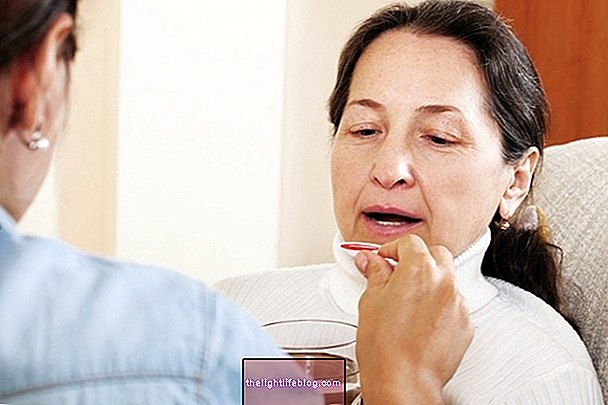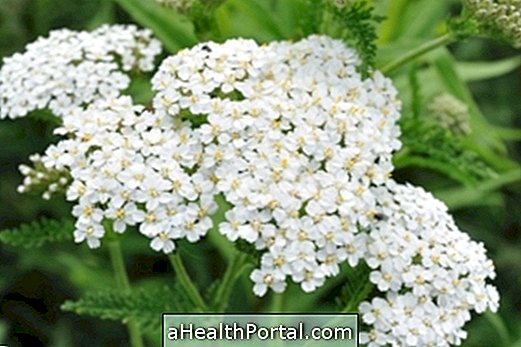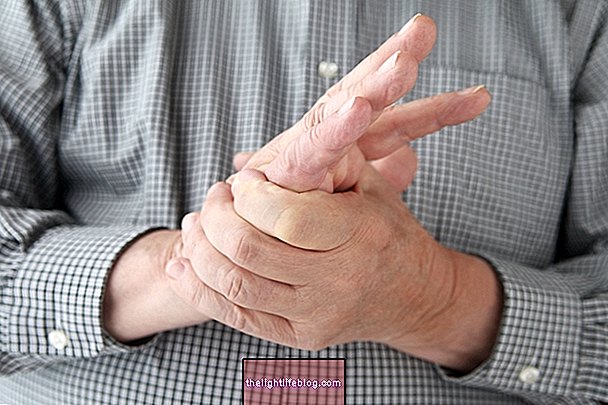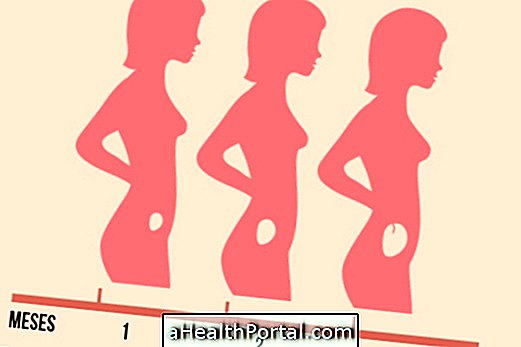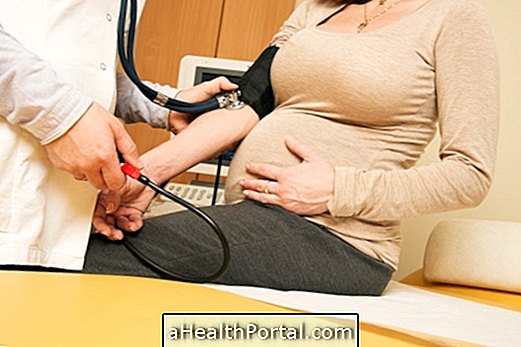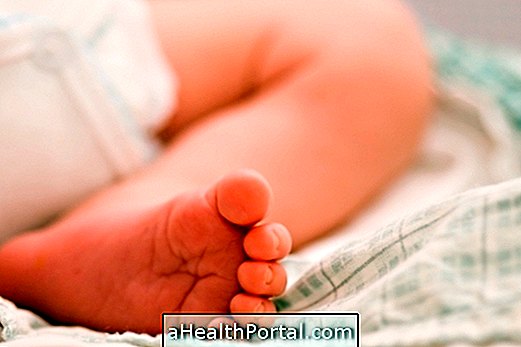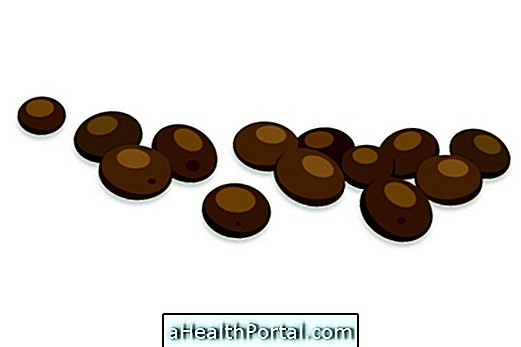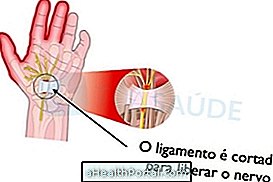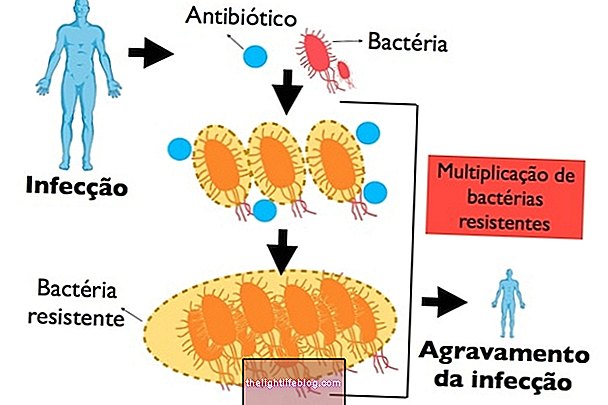Lung cancer is a serious disease characterized by the presence of symptoms such as cough, hoarseness, difficulty in breathing and weight loss.
Despite its severity, lung cancer is curable when identified early, and its treatment, which can be done with surgery, radiation or chemotherapy, and can last for months or years. However, the most common is that lung cancer is discovered in the advanced stage of the disease, which develops very fast, with less chance of cure.

Main forms of treatment
Treatment for lung cancer usually varies according to the type of cancer, its classification, tumor size, presence of metastases and general health. However, the most used types of treatment are:
1. Surgery
The surgery is done with the objective of removing the tumor and the lymph nodes affected by the cancer, in order to prevent the cancer cells from spreading to other parts of the body.
Depending on the characteristics of the cancer, thoracic surgeons can perform the following surgeries to treat lung cancer:
- Lobectomy: it is when an entire lung lobe is removed, and it is the most suitable type of surgery for lung cancer, even when the tumors are small;
- Pneumectomy: performed when the entire lung is removed and indicated when the tumor is large and is located close to the center;
- Segmentectomy: a small part of the lung lobe with cancer is removed. It is indicated for patients with small tumors or who are in a fragile state of health;
- Resection sleeve: it is not very common and is performed to remove a tumor that affects the region of the bronchi, which are the tubes that take air into the lungs.
Generally, surgeries are performed by opening the chest, called thoracotomies, but they can be performed with the aid of video, called video-assisted thoracic surgery. Video surgery is less invasive, has a shorter recovery time and causes less postoperative pain than open surgery, however it is not indicated for all types of lung cancer.
The recovery time from the surgery depends on the type of surgery performed, but usually the hospital discharge is after 7 days and the recovery and return to usual activities can last from 6 to 12 weeks. The surgeon will give you medications to relieve pain and may recommend respiratory physiotherapy to help improve your breathing.
After surgery it is possible that complications such as difficulty breathing, bleeding or infections may arise and that is why it is important to always follow the surgeon's recommendations and take the indicated medications.
In addition, after the surgery a drain is placed to remove blood and liquids accumulated in the surgery, it is necessary to maintain care in the dressing of the drain and always inform the aspect of the content inside the drain. Check everything about the drain after surgery.
2. Chemotherapy
Chemotherapy is a common treatment for various types of lung cancer and aims to destroy cancer cells, located in the lung or spread throughout the body. This type of treatment is done through the application of medications through the vein or by injections, in some cases being more specific to be in tablets. The drugs used in chemotherapy were developed to destroy and stop the growth of cancer cells.
The duration of chemotherapy treatment depends on the type, extent and severity of lung cancer, but on average it lasts 1 year. Chemotherapy sessions are called cycles, and each cycle is performed every 3 to 4 weeks. Rest time is required between each cycle because chemotherapy also destroys healthy cells that need to recover.
The most commonly used drugs in chemotherapy for the treatment of lung cancer are Cisplatin, Etoposide, Gefitinib, Paclitaxel, Vinorelbine or Vinblastine and depending on the treatment protocol that the doctor indicates, they can be used in combination between them and in other types of treatment, for example. example, it can be done before or after surgery.
However, it is common for side effects related to the use of these drugs to arise, such as hair loss, inflammation of the mouth, loss of appetite, nausea and vomiting, diarrhea or constipation, infections, blood disorders and extreme tiredness, for example. Understand what to do to lessen the side effects of chemotherapy.
Most side effects disappear after finishing treatment, but in some cases pain relievers or nausea remedies can be used to relieve symptoms and make treatment easier to follow. Check out some simple tips on how to relieve the main side effects of chemotherapy:

3. Immunotherapy
Some types of lung cancer produce specific proteins that prevent the body's defense cells from destroying cancer cells. Therefore, some medications have been developed to block the action of these proteins causing the body to fight cancer.
These drugs are part of immunotherapy, as they help the body's immunity to treat lung cancer. Some of the drugs used for lung cancer are atezolizumab, durvalumab, nivolumab and pembrolizumab. Currently, several other similar drugs are being developed and tested to treat all types of lung cancer.
Immunotherapy drugs have side effects other than chemotherapy, and generally these effects are weaker, however, they can cause tiredness, shortness of breath and diarrhea.
4. Radiotherapy
Radiotherapy is a treatment for lung cancer in which radiation is used to destroy cancer cells, and external radiation can be applied through a machine that emits radiation beams, or by brachytherapy, in which the radioactive material is placed next to the tumor. .
Before starting the radiotherapy sessions, a plan is made and markings are made on the skin, which indicate the correct positioning on the radiotherapy machine, and thus, all sessions are always in the marked location.
Radiation therapy, like chemotherapy, can also be performed in conjunction with other types of treatments, such as before surgery, to reduce the size of the tumor, or afterwards, to destroy cancer cells that may still be in the lung. However, this type of treatment can also result in side effects, such as tiredness, loss of appetite, sore throat, inflammation where the radiation is applied, fever, cough and shortness of breath, for example.
Generally, the side effects disappear at the end of treatment, but some symptoms such as cough, shortness of breath and fever, indicative of inflammation of the lungs, may persist for a few months. Know what to eat to alleviate the effects of radiation therapy.
5. Photodynamic therapy
Photodynamic therapy for lung cancer is used in the early stages of the disease when it is necessary to unblock the airways that are blocked by the tumor. This therapy consists of the use of a special medicine, which is injected into the bloodstream in order to accumulate in the cancer cells.
After the drug has accumulated in the tumor, a laser beam is applied at the site to kill the cancer cells, which are then removed by bronchoscopy. Photodynamic therapy can cause airway swelling for a few days, causing shortness of breath, bloody cough and phlegm, which can be treated at the hospital.
6. Laser therapy
Laser therapy is a treatment used in some cases of lung cancer, especially if the tumor is small. In this type of treatment, the laser is applied via endoscopy, through a flexible tube that is inserted through the mouth to the lung, called a bronchoscope, in order to destroy cancer cells.
The procedure for applying the laser is similar to performing an endoscopy, lasts an average of 30 minutes, requiring a fast of 6 hours and sedation is performed to sleep during the exam and not to feel pain.
7. Radio frequency ablation
In cases where lung cancer is in the early stage, radiofrequency ablation is indicated instead of surgery. It uses the heat produced by radio waves to kill cancer cells in the lung, using needles or tubes that heat and destroy the tumor. These needles are guided by computed tomography to know the exact location of the tumor.
This procedure is done under sedation and lasts about 30 minutes. After performing this treatment, the site may become painful, so the doctor prescribes the use of pain medications, such as pain relievers.
What is the estimated lifetime?
Life expectancy after the discovery of lung cancer varies from 7 months to 5 years, depending on several factors, such as general health, type of lung cancer and start of treatment. Even when this type of cancer is discovered at an early stage, the chances of a cure are not very high, because it has a great chance of coming back, which happens in about half of the cases.
Was this information helpful?
Yes No
Your opinion is important! Write here how we can improve our text:
Any questions? Click here to be answered.
Email in which you want to receive a reply:
Check the confirmation email we sent you.
Your name:
Reason for visit:
--- Choose your reason --- DiseaseLive betterHelp another personGain knowledge
Are you a health professional?
NoMedicalPharmaceuticalsNurseNutritionistBiomedicalPhysiotherapistBeauticianOther
Bibliography
- CANCER RESEARCH UK. Lung cancer treatment. Available in: . Accessed on Oct 14, 2019
- CANCER TREATMENT CENTERS OF AMERICA. Lung cancer treatments. Available in: . Accessed on Oct 14, 2019
- GOLDMAN, Lee; SCHAFER, Andrew I.. Goldman-Cecil Medicine . 25, ed. Rio de Janeiro: Elsevier, 2018. 1333-1337.


.php)
